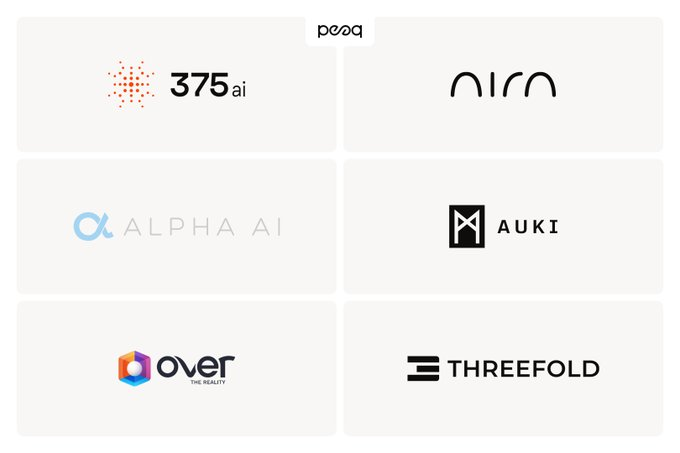peaq: Rebuilding Physical World as DePIN Infrastructure Layer
peaq is a Layer‑1 blockchain designed for decentralized physical infrastructure networks (DePIN), transforming real‑world devices (e.g. vehicles, sensors, energy equipment) into on‑chain provable, revenue‑sharing “Machine Real‑World Assets (Machine RWA)”. On July 12, 2025, its token $PEAQ launched on Binance Alpha with a two‑stage airdrop—marking mainstream exchange recognition for the DePIN sector. The project already spans 20+ industries and has over one million devices on‑chain, becoming a key foundation for IoT and real‑asset tokenization.

This Token Insights article dives into peaq’s technical architecture, tokenomics, and ecosystem, explaining how it constructs a foundational platform for physical infrastructure on‑chain through modular functionality and cross‑chain compatibility.
Background & Vision: Democratizing the Machine Economy
Core Challenge
Traditional physical infrastructure (power grids, transport networks) suffers from centralized operational costs, data monopolies, and single‑point‑failure risks. DePIN aims to enable device coordination and shared revenue via blockchain—but existing chains face limitations in performance and device support: e.g. Ethereum L2 transactions cost over $0.5 and lack IoT protocol compatibility. peaq was born to address this contradiction by:
-
Lowering on‑chain barriers: SDK supports 500+ IoT protocols, enabling rapid DePIN deployments
-
Constructing a machine‑asset economy: enabling users to share fractional ownership of devices and earn yield, addressing automation‐era employment challenges
Milestones
-
Q2 2024: CoinList public sale raising $20 million
-
Q2 2025: Integrated Chirp Network’s decentralized comms layer, covering IoT devices in 33 countries
-
July 2025: $PEAQ listed on Binance Alpha, offering 643 tokens/person airdrop (15 Alpha points required)
Tech Architecture: Four Modular Layers
Data Access Layer
- Supports streaming/batch data ingestion and Arweave storage
- Ensures data integrity via device digital signature → pattern recognition → oracle verification, addressing tampering
Consensus & Execution Layer
- Built on Substrate with DPoS consensus; Nakamoto coefficient > 130 (top in Web3 decentralization)
- Peak throughput > 100,000 TPS; cost per tx as low as $0.00025, optimized for industrial‑grade high‑frequency interaction
- Integrated with Wormhole for cross‑chain communication across eight major chains (Ethereum, BNB Chain, etc.)
Modular DePIN Toolkits
- peaq ID: assigns unique on‑chain device identities, enabling cross‑platform authentication
- peaq Access: role‑based permission control system—for shared‑car, etc.
- peaq Verify: uses AI to detect abnormal device data patterns
Developers can deploy core functionality using 10 lines of JS via SDK. See JuCoin IoT‑Blockchain Guide.
Optional DePIN Modules
- As above (“Modular DePIN functionality”)
Tokenomics: $PEAQ Distribution & Value Capture
Token Distribution Model
-
Fixed supply: 4.2 billion tokens; initial circulation: 13.23 million (~3.15%)
-
Core allocation: 21% community incentives, 34% investors (vested), 20% foundation
Utility & Incentives
-
Fuel: pays for device data on‑chain and contract execution
-
Staking & Governance: validators earn 8–12% APY; token holders vote on new RWA types
-
Device Reputation Staking: operators stake tokens to prove reliability and improve trust
-
Airdrop Campaigns: Binance Alpha users claimed tokens via points, accelerating early distribution
Valuation Benchmarks
Initial FDV: $333 million; issue price $0.079
If market cap aligns with peers:
- Peer DIMO (~$40.3M) → PEAQ price +284.8%
- Peer io.net (~$259M) → +2,373%
Ecosystem Progress: Real Use of Machine RWA
Leading Partnerships
-
Silencio: noise‑monitoring network with 200,000 devices collecting environmental data for token earnings
-
XMAQUINA: tokenized robot café in Vienna; customers earn dividends by holding “coffee machine RWA” shares
-
Alpha AI: drone‑based 3D mapping protocol launching August 2025; users share compute power for $PEAQ rewards
Enterprise Alliances
-
Siemens & Bosch: partnering on Industrial 4.0 equipment on‑chain pilots for real‑time production data verifiability
-
Polkadot ecosystem: using Agile Coretime to lease elastic compute resources, supporting DePIN scaling
Challenges & Outlook: Key DePIN Scaling Battles
Risks to Monitor
-
Cross‑chain dependence: Wormhole vulnerability may expose assets
-
Data verification gaps: oracle sampling bias could affect scenarios like agricultural sensing
-
Regulatory adaptability: SEC has yet to define Machine RWA status—may limit North American expansion
Growth Catalysts
-
Regulatory breakthrough: EU incorporates Machine RWA under Digital Assets Framework, recognizing as compliant financial instrument
-
Tech upgrades: Q4 2025 integration of NOMT storage solution for 10× read‑efficiency
-
Bitcoin ecosystem integration: exploring collaboration model between Bitcoin Ordinals and DePIN devices
peaq’s essence is the commoditization of physical value
making every device a provable on‑chain node, every kWh, every km traceable revenue asset. If by 2026 it achieves 2 million+ on‑chain devices, peaq could emerge as the trillion‑dollar infrastructure settlement layer for real‑world assets on‑chain.
Blockchain transcends virtual tokens—it quietly reshapes the tangible world we touch.




